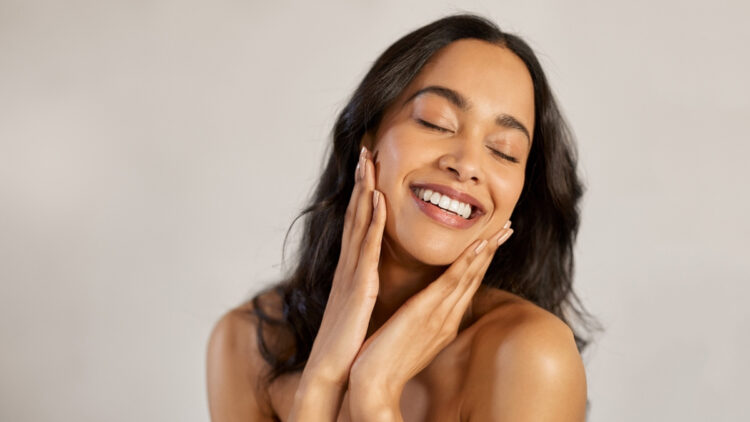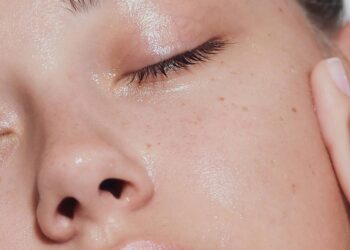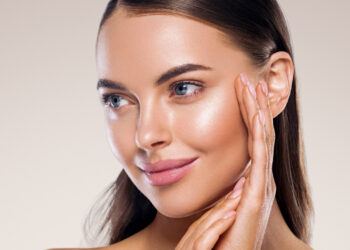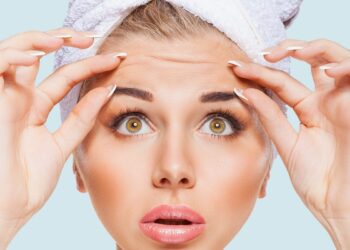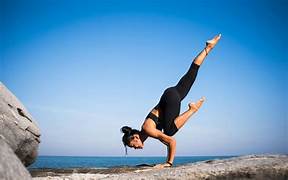In the ever-evolving world of beauty, the quest for a more youthful appearance is a journey many people embark on. Anti-aging products promise to turn back the clock, but what’s the real science behind their claims? This in-depth guide will demystify the key ingredients, technologies, and practices that form the foundation of effective anti-aging skincare. By understanding how these products work on a cellular level, you can make informed decisions and build a regimen that truly delivers results.
Understanding the Aging Process
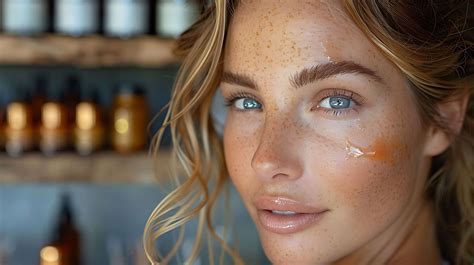
Before diving into the solutions, it’s crucial to understand the problem. Skin aging is a complex biological process influenced by both intrinsic (internal) and extrinsic (external) factors.
A. Intrinsic Aging: This is a natural, unavoidable process driven by genetics. As we age, our cells divide more slowly. The collagen and elastin—proteins that provide the skin’s structure and elasticity—naturally decrease, leading to fine lines and wrinkles. Our skin also becomes thinner and less able to retain moisture.
B. Extrinsic Aging: This type of aging is caused by environmental factors, with the sun being the most significant contributor. Photoaging, caused by prolonged exposure to ultraviolet (UV) radiation, accelerates the breakdown of collagen and elastin, leading to premature wrinkles, age spots, and a leathery texture. Other factors include pollution, smoking, poor diet, and stress.
The Powerhouse Ingredients: What to Look For
Not all anti-aging products are created equal. The most effective ones contain clinically proven ingredients that target the root causes of aging.
A. Retinoids (Vitamin A Derivatives): Often hailed as the gold standard in anti-aging, retinoids (including retinol, retinaldehyde, and prescription tretinoin) are incredibly effective. They work by accelerating cell turnover, which helps to unclog pores, reduce the appearance of fine lines and wrinkles, and even out skin tone. They also stimulate collagen production, improving the skin’s firmness and elasticity.
B. Antioxidants: These powerful compounds neutralize free radicals—unstable molecules that damage skin cells and accelerate aging. Vitamin C is a popular antioxidant that not only protects against environmental damage but also brightens the complexion and boosts collagen synthesis. Other notable antioxidants include Vitamin E, ferulic acid, and green tea extract.
C. Hyaluronic Acid: Think of this ingredient as a super-hydrator. Hyaluronic acid is a substance naturally found in our skin that can hold up to 1,000 times its weight in water. As we age, our natural supply diminishes. Applying it topically helps to draw moisture into the skin, plumping it up and reducing the visibility of fine lines.
D. Peptides: These are short chains of amino acids that serve as the building blocks of proteins like collagen and elastin. When applied to the skin, peptides act as signals, encouraging the cells to produce more of these crucial proteins. Different types of peptides target specific concerns, from firming to reducing wrinkles.
E. Niacinamide (Vitamin B3): This versatile ingredient offers a multitude of benefits. It helps to strengthen the skin’s barrier function, reduce inflammation, minimize pore size, and improve uneven skin tone. Its gentle nature makes it suitable for almost all skin types, including sensitive skin.
F. Alpha Hydroxy Acids (AHAs) and Beta Hydroxy Acids (BHAs): These chemical exfoliants work by dissolving the bonds between dead skin cells, revealing a smoother, brighter complexion. Glycolic acid (an AHA) is known for its ability to reduce the appearance of fine lines, while salicylic acid (a BHA) is excellent for unclogging pores and treating blemishes. Regular exfoliation improves skin texture and allows other products to penetrate more effectively.
The Crucial Role of Sunscreen

If you take away only one thing from this article, it should be this: sunscreen is the most powerful anti-aging product you can use. It’s the ultimate defense against extrinsic aging.
A. How UV Rays Cause Damage: UVA rays penetrate deep into the dermis, where they damage collagen fibers and contribute to photoaging. UVB rays are the primary cause of sunburn and can lead to skin cancer. A broad-spectrum sunscreen protects against both types of radiation.
B. Application Matters: To be truly effective, sunscreen must be applied daily, rain or shine, even when indoors near windows. It should be applied generously—about a quarter-sized amount for the face—and reapplied every two hours, especially if you’re sweating or swimming.
Beyond Products: Lifestyle and Technology
While skincare products are essential, a holistic approach to anti-aging includes lifestyle adjustments and advanced technological treatments.
A. A Healthy Lifestyle: A balanced diet rich in antioxidants, healthy fats, and lean protein supports skin health from within. Staying hydrated, getting adequate sleep, and managing stress are equally important. These habits reduce inflammation and give your body the resources it needs to repair and rejuvenate itself.
B. Professional Treatments: For those seeking more dramatic results, professional treatments can complement a good at-home routine. Laser resurfacing and microneedling create controlled micro-injuries in the skin, stimulating the body’s natural healing process and boosting collagen production. Botox and dermal fillers offer temporary solutions to smooth wrinkles and restore volume.
C. The Rise of Skincare Devices: At-home devices are becoming more sophisticated and accessible. LED masks use light therapy to target specific concerns (red light for collagen production, blue light for acne), while microcurrent devices deliver low-level electrical currents to tone and lift the facial muscles.
Building Your Anti-Aging Regimen
Creating an effective routine doesn’t have to be complicated. Consistency is key.
A. Morning Routine:
- Cleanse: A gentle wash to remove sweat and oils from the night.
- Antioxidant Serum: A Vitamin C serum is ideal for protecting your skin from daily environmental stressors.
- Moisturizer: Hydrate the skin and lock in the serum.
- Sunscreen: The final and most critical step.
B. Evening Routine:
- Double Cleanse: To remove all makeup and impurities.
- Treatment Serum: This is the best time to apply a retinol or peptide serum, as your skin repairs itself overnight.
- Moisturizer: A richer moisturizer can be used at night to support the skin’s natural repair process.
In conclusion, the science of anti-aging is a multi-faceted field. It combines a deeper understanding of the biological aging process with the power of active ingredients, the importance of sun protection, and the synergy of a healthy lifestyle. By investing in the right knowledge and consistent care, you can effectively manage the signs of aging and maintain a vibrant, healthy complexion for years to come.

